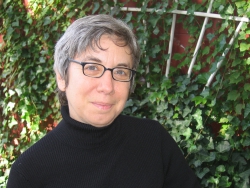Feb
12
2015

Written by Frances Kunreuther
Sean and I have been grappling with how to talk about the (frequently overused) concept of intersectionality. For years, we have admired the pioneering work of Kimberlé Crenshaw, who is credited with coining the term, and of Cathy Cohen, who helped apply the idea of intersectionality to the LGBT community. But it has been hard to separate out the buzzword “intersectionality” from its meaning as conceived through a black feminist lens.
We found that intersectionality was a word commonly used in a recent exploration we did on how LGBT groups worked across issue areas in two regions in the U.S. It soon became clear to us – through both interviews and actions – that there were two different ways “intersectionality” was applied. In the first case, the word was used to discuss how all issues are related and, by implication, equal. This was reflected in many of the interviews of white activists who saw intersectionality as way to link different forms of oppression and address the question, how can we work together to support each other’s issues. However intersectionality meant something different to queer people and/or women of color. It explained how different forms of oppression were interconnected. It also emphasized the need to analyze and understand the impact of pursuing single issues, especially looking at the unintended consequences that too often harm people with multiple marginalized identities.
What was unexpected is what happened when groups used the second intersectional approach — the one committed to addressing the compounding (and often confounding) aspects of multiple oppressions. The circle of those involved in fighting for change continued to grow. Rather than only zero in on the areas of overlap between issues, people had a deep and profound understanding of how different issues were interrelated and how to pay attention to – and act on – what could be harmful to others. This understanding led to a broader vantage point and enabled more and more people to work together.
The deeper use of intersectionality was based on values and a long-term vision for change. From there, strategies developed – some winnable in the short-term and some that reached for larger and longer term goals – but all goals were understood through their impact on other communities that have been marginalized. It also mattered that people who live at the intersections were in leadership positions and were at the table setting the agenda, informing the values-based approaches and pushing to widen the circle to include more constituencies.
We heard activists talk about working together and being inclusive, in more than a perfunctory way; including values of love, generosity of spirit, the common good. These co-exist with analysis, strategy, base-building and wins. It’s not pie in the sky – it’s happening right now. And it can occur more often if we let it.
